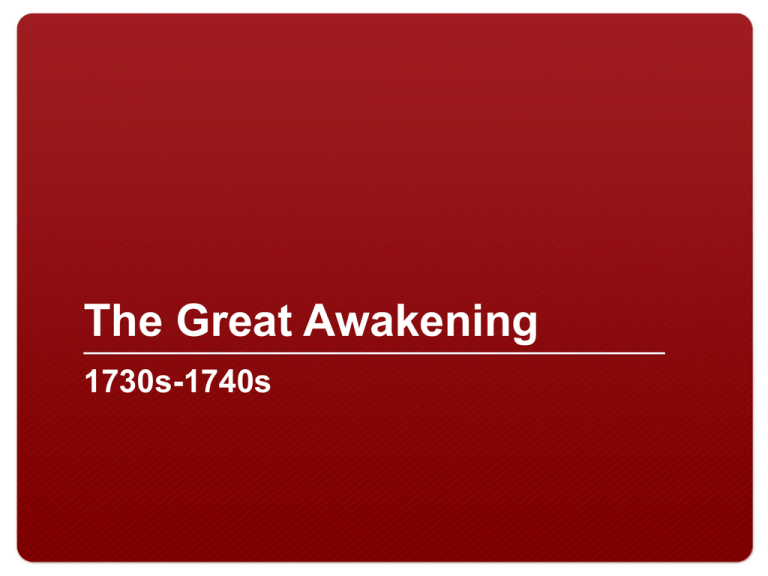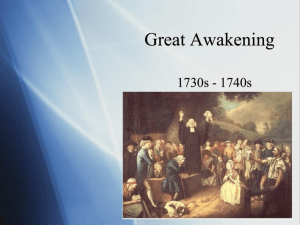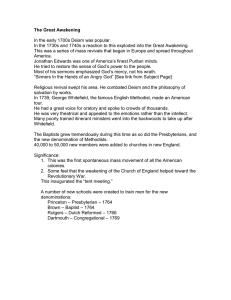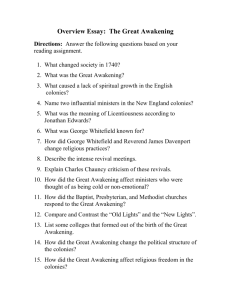What was the Great Awakening?
advertisement

The Great Awakening 1730s-1740s What was the Great Awakening? George Whitefield preaching •Religious revival movement •Evangelicism – “new birth” considered the ultimate religious experience •Followers accepted that they were sinners and asked for salvation 2 • increase in the number of people going to church. • democratization of Christianity which meant that everyone has a chance at salvation • Religion is something of the people • ordinary lay people become preachers • they stress the equality of all people & attack religious & political leaders who had great wealth and power • challenge authority 3 Do college students go to church? LifeWay Research Finds Reasons 18- to 22-Year-Olds Drop Out of Church 4 Before the Great Awakening •Before the 1730s, most colonies had two established religions. •Congregationalism was the largest religion in New England (Puritans and other dissidents who broke away from the Church of England). •Anglicanism was the largest religion in New York and the Southern colonies (same as the Church of England). 5 Old Lights vs. New Lights •Churches that grew as a result of the Great Awakening: Presbyterianism, Methodism, Baptism (New Lights) •Great Awakening challenged authority and hierarchy of established churches (Old Lights: Congregationalists and Anglicans) •Great Awakening said that anybody could be converted and born again. You didn’t need traditional church leadership to decide whether or not you belonged. 6 How does this relate to the American Revolution? 7 Leaders of the Great Awakening George Whitefield Jonathan Edwards 8 Central Historical Question: Why was George Whitefield so popular?



